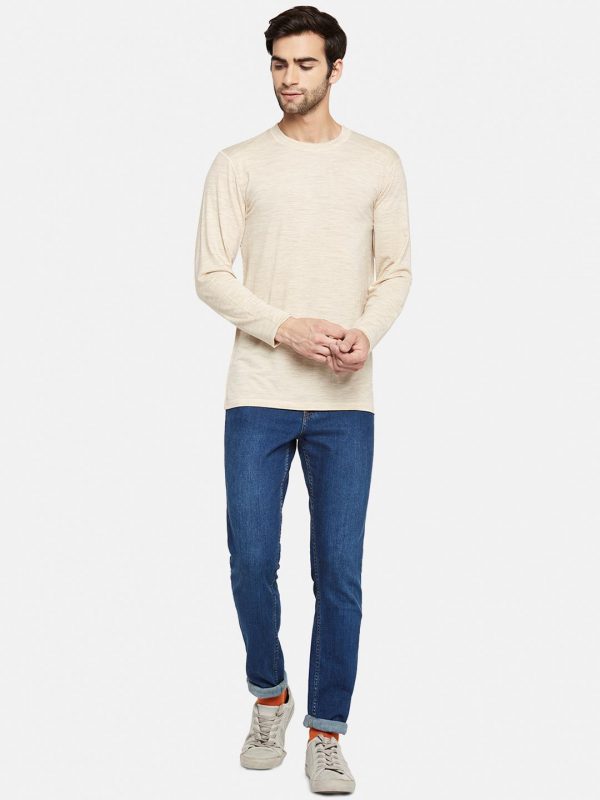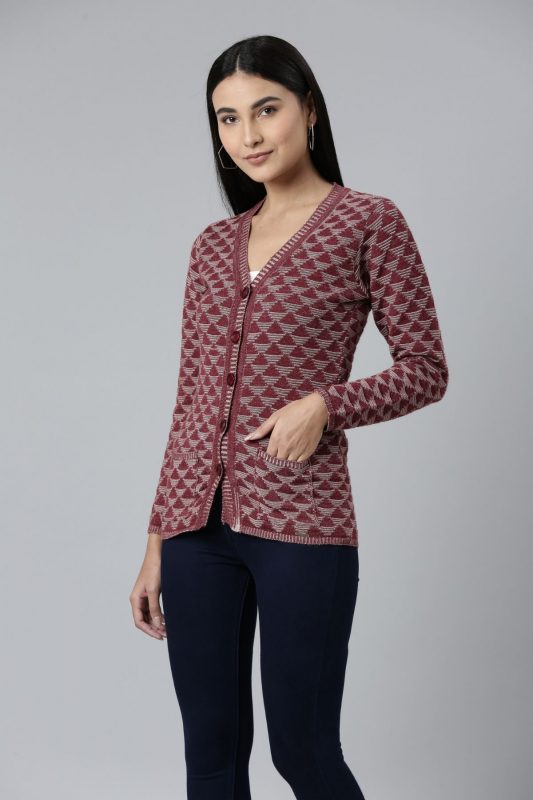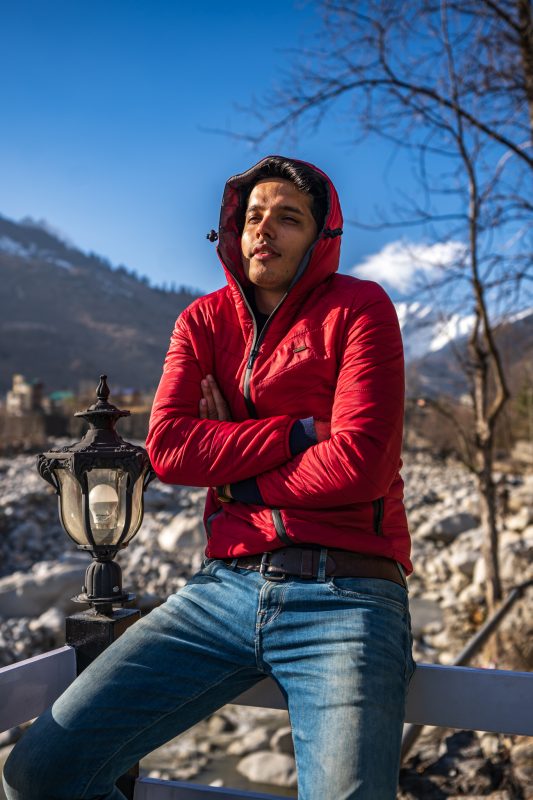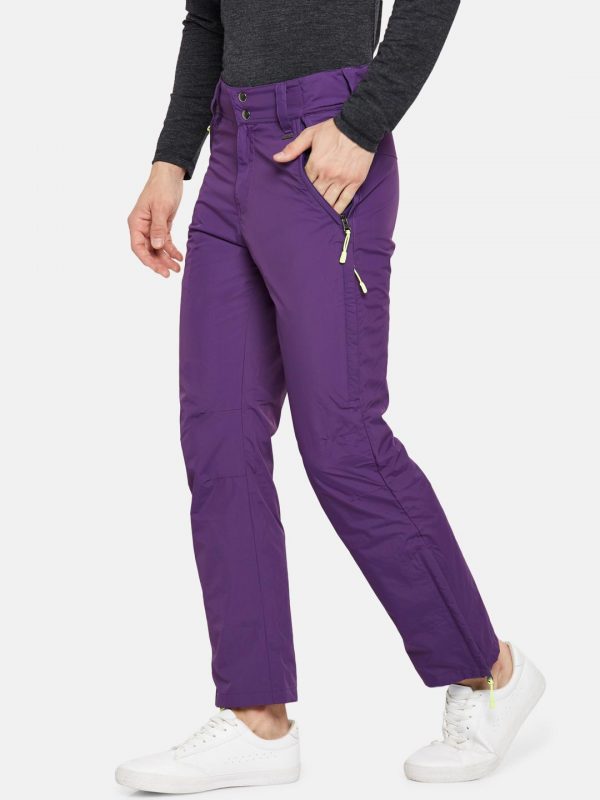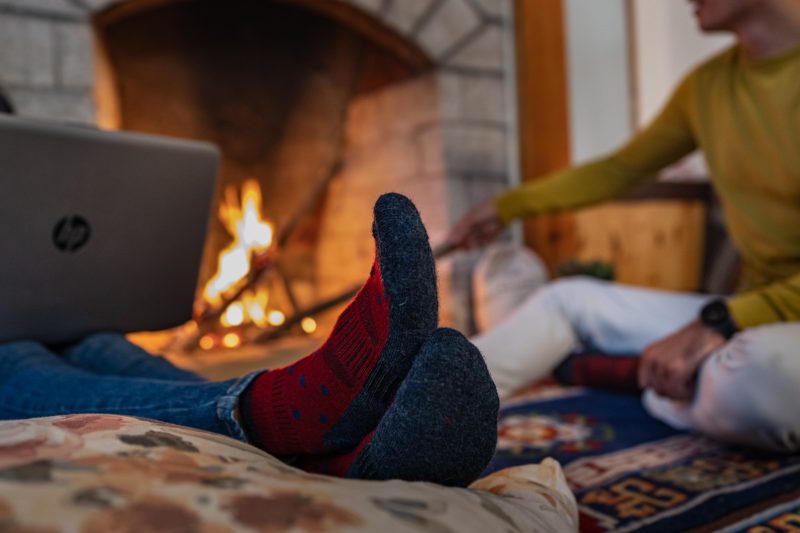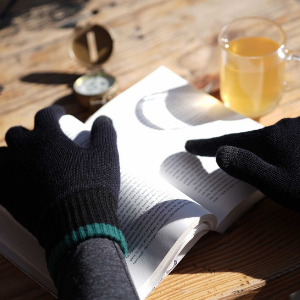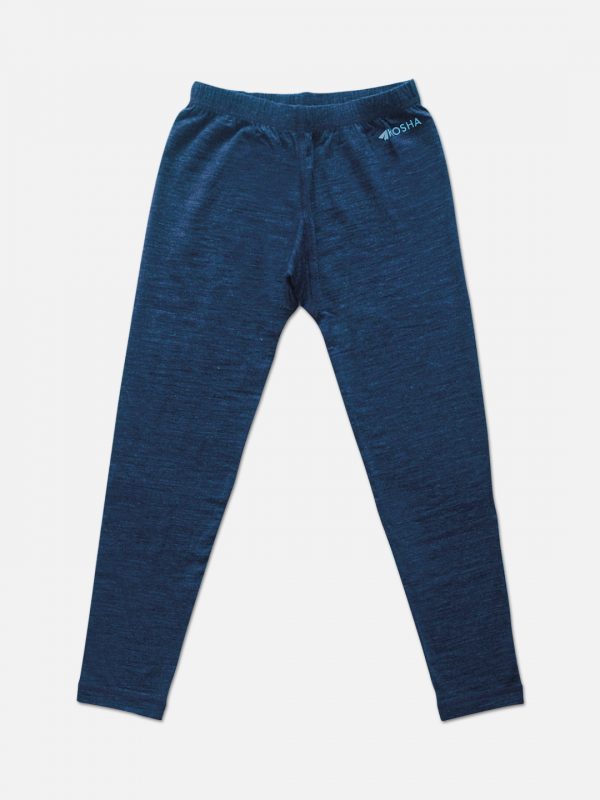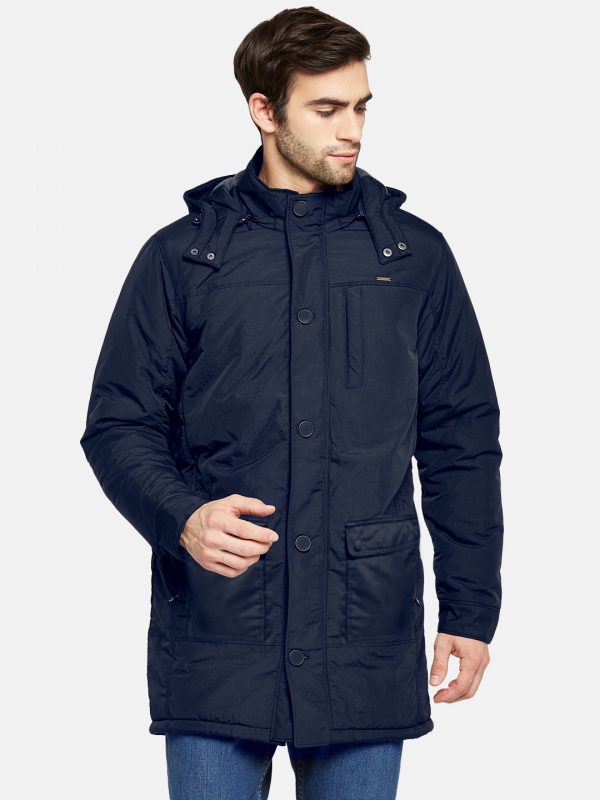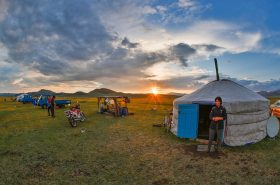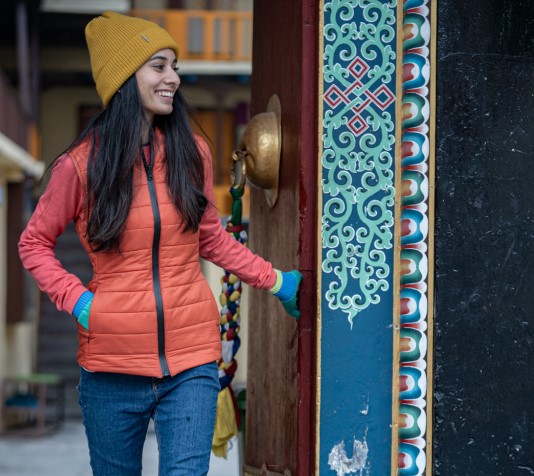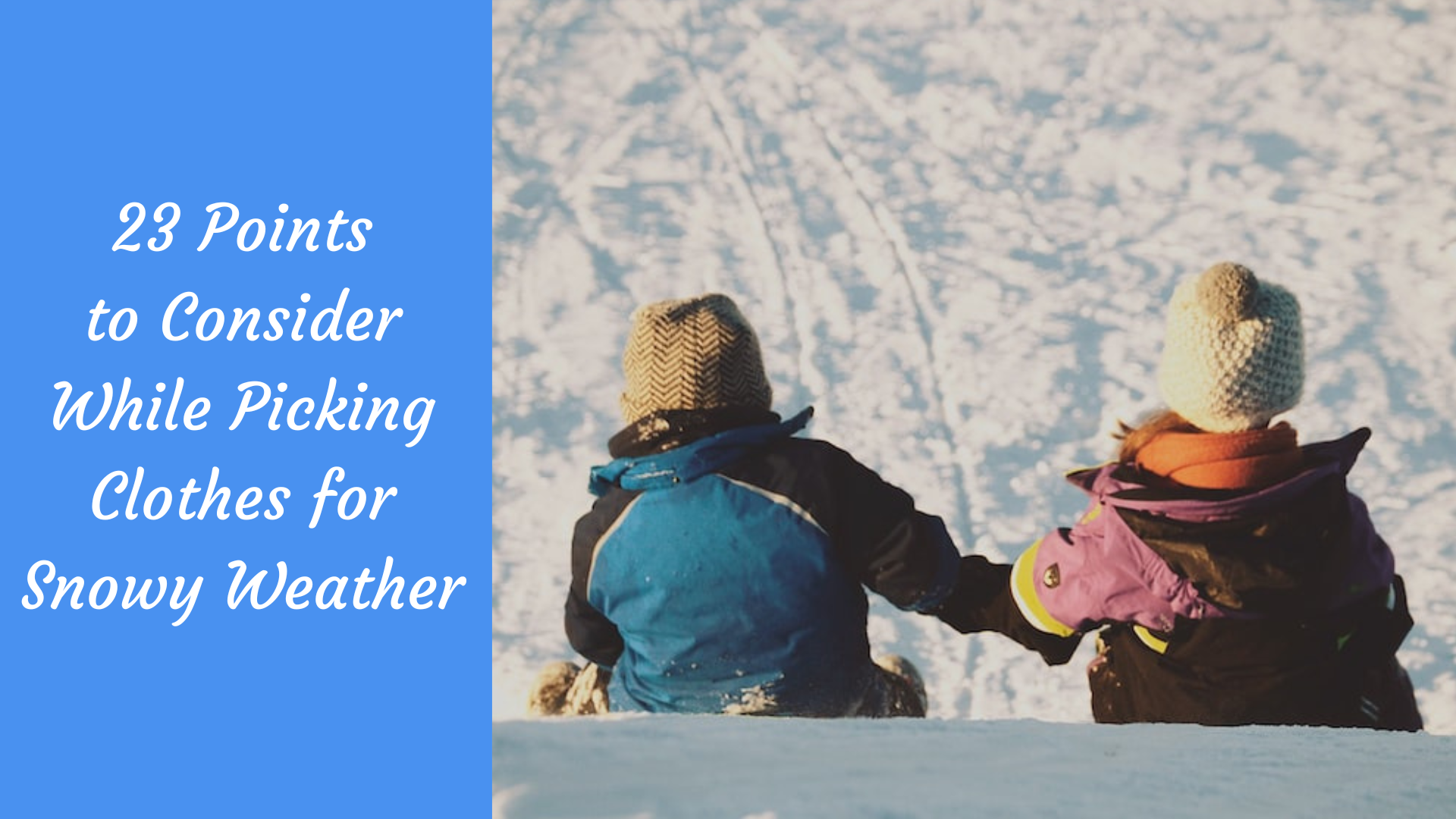
Snow is such a magical aspect of winter weather. You must’ve heard the phrase “as white as snow”. Well, when there’s snow all around the landscape, it can be a magical sight. And if you want to enjoy yourself, you need the right clothes for snowy weather.
Through this post, I’ll help you check out the essentials for clothes in the snow. You could use this as a reference point while shopping in winter.
So make some place in your winter wardrobe this season. You might want to add some clothes for the snowy weather in there.
Table of Contents
Clothes for Snowy Weather: Options
Base Layers
Your winter layering system begins with a base layer. As the name suggests, it’s often the base of a three-layered winter outfit.
You wear base layers close to your skin. Hence, you might hear people call it a “second skin”. Since it’s closest to your skin, the material should be appropriate.
It has to be warm, dry, comfortable, and breathable too. Moisture-wicking is also an important characteristic that you must look out for.
Among fabrics, merino wool or synthetic fabrics are your safest choices for a base layer. For skiing or snowboarding, merino blends will regulate your body temperature.
They offer natural odor control and allow you to move freely. These are some essential characteristics of your clothes for snowy weather.
The best base layers will also protect your feet. So you must get some base layer bottoms for your legs too. You can wear them under your softshell or ski pants for protection.
Base layers come in different fabrics depending on why and when you need them. You also get to choose from various colors for your winter wardrobe.
Mid-Layers
Mid-layers are the next layer after the base. So the ideal clothes for snowy weather would be sweaters or hoodies as mid-layers.
This layer will go over your thermals and work to keep the heat in. Fleece or down would be great mid-layer fabrics depending on your preference and activity. Wool can also work here on a sweater.
The ideal mid-layer clothes for snowy weather offer excellent warmth. So purchase lightweight fleece, merino, or down fabrics for this winter layer. Your mid-layer should be light, breathable, and high on warmth.
Outer Layers
Finally, you must be able to fit in an outer layer as well. This layer is the outermost among all three winter layers. You will often see jackets and coats on this layer.
Your outer layers will protect you from the wind, rain, sleet, and snow. Hence it works well on your clothes for snowy weather. It should be capable enough to keep the rain, wind, and snow out.
Waterproof Insulated Jackets and Pants
Jackets are an essential part of any peak winter climate. But you must not get floored by the first set of jackets you see.
You must look out for some specifics in your winter jackets for the season. Waterproofing and insulation are two characteristics that should feature in your jacket.
Down is an excellent choice for insulation and is great for dry conditions. I say that because you’ll see it lose its insulating properties once it becomes wet.
If you plan on skiing, snowboarding, or sledding, you might want to consider a highly functional insulated snow jacket. If that’s so, you need to find one that doesn’t feel bulky or absorb sweat and moisture.
You can add a pair of windproof, insulated ski pants and your ski jacket. They’re as handy on the chairlifts as when falling off your skis. They’ll help you stay warmer and drier for longer periods.
Footwear Along With Clothes for Snowy Weather
You must also pay attention to your feet in winter. They need warmth and protection from the elements. If you risk exposing them, you will suffer from frostbite.
And that isn’t an excellent thing for your winter experience. So have a look at the following options for footwear in winter. It’ll help you decide what you need to pack as clothes for snowy weather.
Waterproof Hiking Boots
Waterproof hiking boots with rubber soles are an excellent choice for your outings in the snow. Look for a large, patterned treads. It will provide you with extra grip on slippery surfaces.
Insulated Boots
Insulated boots are warmer than your average leather boots for winter weather. They’re boots with wool, fleece, or synthetic linings to help keep the heat trapped inside. They should be a little longer too, to keep the snow out.
Socks
Apart from the best-suited boots, you need the correct pairs of socks for snowy weather. Merino wool socks will keep your feet warm, and dry and offer natural odour resistance. Hence, it’s a win-win situation.
Accessories Along With Clothes for Snowy Weather
Accessories will be a valuable addition to your clothes for snowy weather. Do not underestimate the importance of suitable winter accessories. They provide you with much-needed layers of warmth to your extremities.
Beanie
Beanies are warm, cute, and comfy accessories for your head. They’ll protect your head from the wind, rain, and snow. It’s essential to close out any possible opening for the air to enter.
If it’s long enough, stretch your beanie to cover your ears. A beanie is also a versatile piece that fits well in most outfits. You’ll also see attractive colors, patterns, and designs on the beanies in the market.
Neck Gaiter
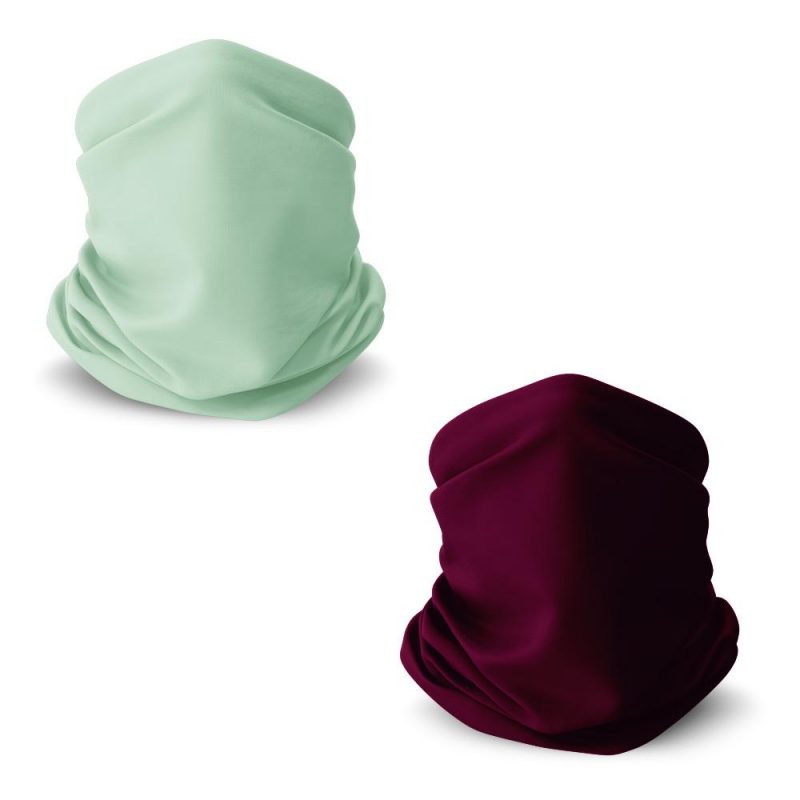
Neck gaiters for your clothes for snowy weather
Neck gaiters are slightly different compared to scarves. A neck gaiter will stay firm and cover parts up to your neck.
It won’t distract you while you ski or snowboard. As for fabrics, merino wool is warm and lightweight.
You can pair your jacket with a neck gaiter and pull it off. Even if there are no snow sports, it won’t take up much space in your backpack.
Balaclava
A balaclava is another useful winter accessory for unbearable temperatures. It can cover your entire face, leaving only the eyes to be seen. They’re not essential, but a fleece balaclava can provide a nice layer of warmth.
You should wear it under your ski helmet on particularly cold, windy days. It’s great for those with sensitive, dry skin as well. You can use it if you want extra protection on your ears and lips.
Ski Gloves
Gloves are another winter essential that’s been around for ages. Your hands could do with the warmth they gegetrom gloves. And so, you need a proper pair of insulated, waterproof gloves in winter.
Whether skiing, snowboarding, or sledding, your hands will be exposed to the cold weather. Look out for a pair that’s secure and tight around the wrist. You should keep the warmth in and not let the snow enter.
Although lightweight, fleece gloves offer excellent warmth and breathability. These are better suited in light snowy conditions.
Snow Helmet
A helmet is handy when you’re out for skin in cold climates. A good snow helmet should offer excellent protection and temperature regulation. It should also have washable padding to keep it fresh.
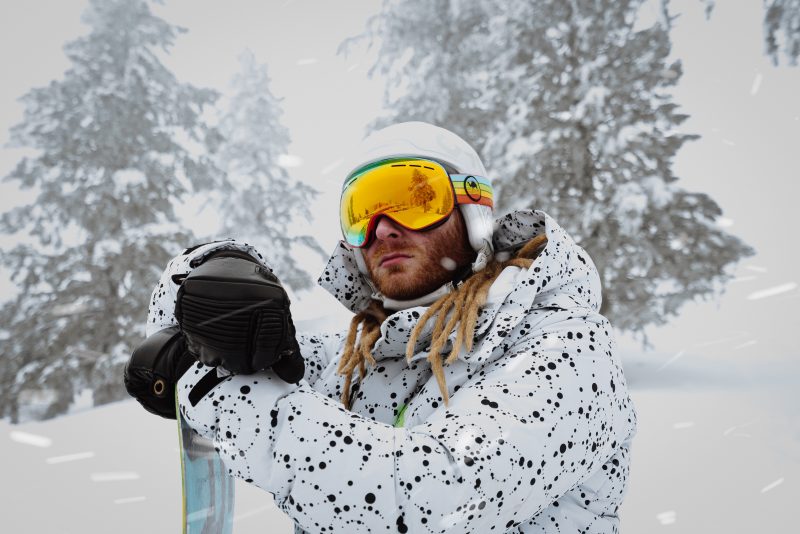
Snow goggles
Snow Goggles
Goggles will also come in handy with your clothes in snowy weather. A pair of snow goggles made for bright, white conditions will help you navigate through the snow.
You’ll need a pair that offers 100% UV protection and excellent visibility for starters. Along with this, comfort is also vital. You’ll often have to wear the goggles under the helmet. Besides sunburn, goggles will also keep the snow away from your eyeballs.
Running Clothes for Snowy Weather
Earmuffs
You also must ensure that your ears are covered and protected from the wind. If your beanies can’t do it, get earmuffs. Fleece earmuffs can help to protect your ears from frostbite. It also allows sweat to evaporate from your scalp.
Bandana
A neck gaiter is valuable on a cold, windy day. It will protect your neck and face. Pull it over your mouth to warm up the air you’re breathing.
It’s especially helpful when you first start your run. Some runners choose to wear a bandanna over their mouth for the same purpose.
Another useful alternative is a buff. It’s a seamless tube of microfibre fabric that you can wear in many ways.
Balaclava or Face Mask
Balaclavas or face masks are also useful when you go out for a run. They’re usually made of fleece or wool. You don’t need them in all kinds of winters. Face masks designed for exercise should be breathable and comfortable.
Gloves or Mittens
While running in winter, keep your hands and fingers warm too. Cover your hands with insulated running gloves or mittens.
Your gloves should also drive away any moisture from sweat. It can also provide breathability and warmth. Apart from this, touchscreen gloves will also allow you to use gadgets and
Kid’s Clothes for Snowy Weather
When you talk of snow, all the kids around will get excited. And hence, it’s also essential for kids to wear the right clothes for snowy weather. Here are some tips for you to ensure that your kids are safe in the snow:
Dress in Multiple Layers
Layering is as essential for kids as it is for adults. Kids need extra attention and protection in winter. Their tolerance levels are lesser compared to adults.
You should dress them in three layers along with accessories.
If you’re feeling comfortable in two layers, add a third layer for your kid. You can adjust these layers based on the climate and conditions as well.
Your layers should be flexible enough to add or remove when needed. A removable coat liner is also useful in such cases.
Stick to Wool and Synthetics
Fabrics are as important for kids as for adults. Pick synthetics and natural wool instead of cotton when buying base layers and socks. The best-suited materials for warm layers and socks are acrylic, polyester, and merino wool.
Wear Waterproof Outerwear
Your outerwear should always be waterproof in winter. This rule applies to kids as well. If they want to enjoy the snow, they’ll need waterproof jackets and coats. They need to be part of their list of clothes for snowy weather.
Invest in a quality coat and snow pants with a specific temperature rating. They should also be able to repel moisture and wind. Choose a rating based on the average temperatures during winter in your area.
Treat outerwear with spray-on durable water repellant (DWR) to increase effectiveness or re-treat an older garment to maintain its performance.
Choose Outerwear in Bright Colours
Children would love to see colors in their outfits. And so, you can use this aspect in your clothes for snowy weather.
Dress children in bright colors with clothes. It will add some interest in their minds to wear the clothes. Also, it will help with visibility in snowy regions. It can be helpful in case of injuries or emergencies,
Check the Weather to Check Safety
Children always love to play outside when it’s snowing, So check the weather forecast and current conditions to see if they can step out.
Avoid sending them out during or if there might be chances of a snowstorm. Frostbite can occur if the temperature or wind chill is at or below 0 degrees Fahrenheit.
Also, ensure that your kids hang around for only short intervals. If the temperatures hit an all-time low, please let them stay at home itself. Check their head, face, ears, hands, and feet at regular intervals when they’re playing outside.
Winter Activities in Snowy Weather
You can have the most fun when you see snow all around you. But that’s only if you’re dressed in appropriate clothes for snowy weather.
There are lots of winter sports you can explore in this beautiful weather. Here are a few of them that you might find exciting:
1. Sledding
Sliding through the cold air can be a great experience in winter. So find yourself a good hill and grab your equipment for some thrills.
Sledding is fun for all age groups. But toddlers should have a parent along with them. And as you’ve read, kids should be bundled in layers to stay warm. This rule also applies to you.
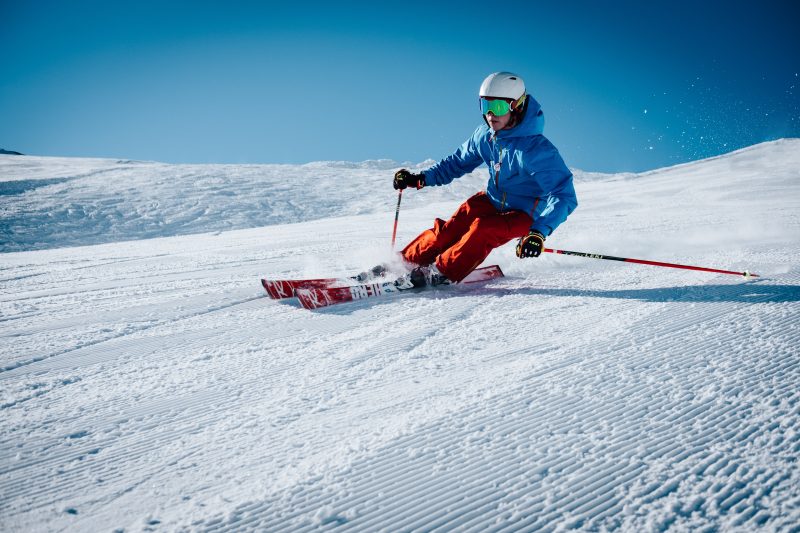
Skiing as an activity
2. Skiing
Skiing is another popular winter sport to indulge in during winter. You need suitable clothes for snowy weather while skiing too. It’s all about dressing in layers for your winter adventure.
3. Snowboarding
Snowboarding is also another popular sport in winter. The safety gear includes helmets, knee pads, wrist guards, and hip pads.
4. Ice Skating
Ice skating can get tricky for newcomers. It’s a slippery activity to indulge in. But if you manage to get a hang of it, you could get addicted.
Most people wear figure skates or hockey skates to start. As beginners, you should wear a helmet and offer them a hand to help with balance.
5. Making Snowmen
Babies and adults would love making a few snowmen in the snowy weather. Stack a few giant snowballs to make the body. Then look out for sticks, berries, fruits, and vegetables to bring it to life.
These are some fun activities you can indulge in while winter is on.
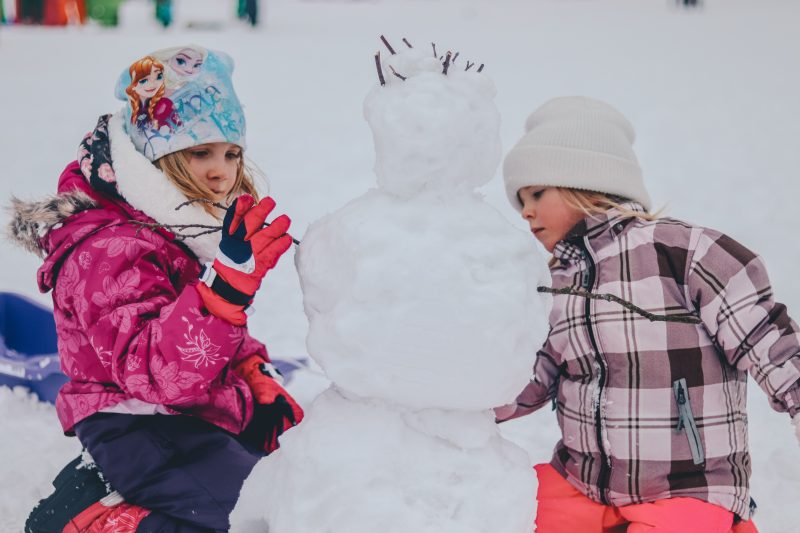
Snowman
FAQs
Here are some frequently asked questions about clothes for snowy weather. Keep reading to know more.
Can I wear jeans in snow?
For wearing under your snow pants, save your track pants, leggings, and other absorbent material pants. Avoid wearing jeans at all costs since they are not flexible and, when worn with the additional layer of snow pants, may make you feel stiff and restrict your ability to turn and move on the slopes.
Do you need special clothes for snow?
For your vacation capsule wardrobe, you’ll unquestionably need a weatherproof jacket, a sweater or pair of thermals, and a standard shirt. You can wear jeans (and possibly tights underneath to keep you warm) or snow pants if the weather is really chilly or snowy.
What shoes to wear in snow?
You can put on winter, snow, or rain boots. Snow or mild rain, however, calls for rain boots. They have a thick sole that offers strong traction and are waterproof.
Are sneakers OK for snow?
The majority of footwear are not made to endure snow. They can become harmed or merely fail to give your feet appropriate support, dryness, or warmth. You probably choose boots to keep your feet warm in chilly weather as well.
Are thermals better than leggings?
Their thermal characteristics are where the two diverge most. Thermal textiles, like thermal wool or thermal polyester, which offer greater thermal insulation but can be a little heavier than fleece-lined leggings, are frequently used to make thermal leggings.
Conclusion
Suitable clothes for snowy weather are a must-have during the winter months. You need the right gear to enjoy the weather and conditions of the place.
I hope you get time to plan a winter vacation in the snowy regions. You should make the most of winter by visiting a place that sees snow annually during the season. If you already live there, it’s such a privilege.
This post was written by Kosha team member – Shawn Mathias
